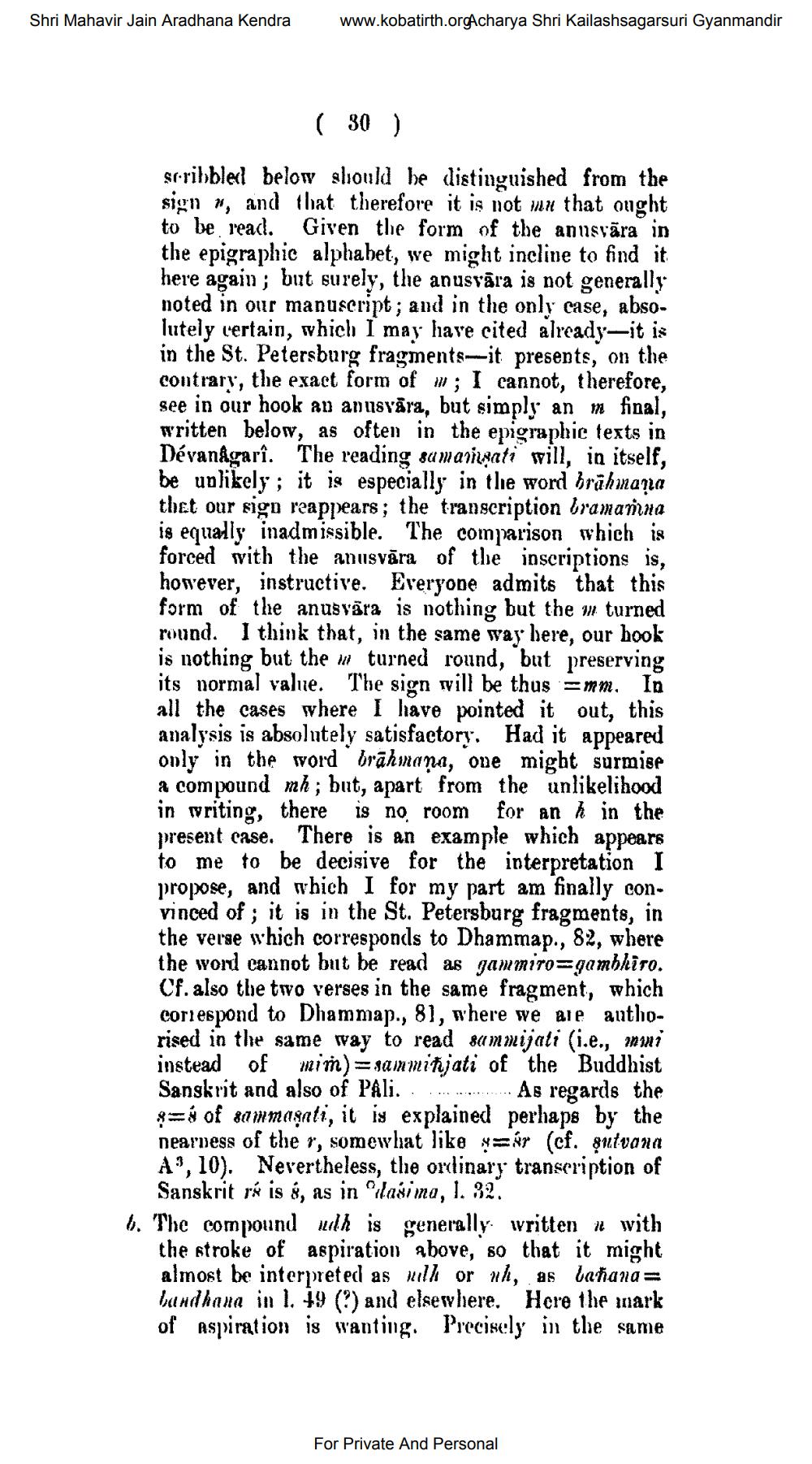________________
Shri Mahavir Jain Aradhana Kendra
www.kobatirth.orgAcharya Shri Kailashsagarsuri Gyanmandir
( 30 )
scribbled below should be distinguished from the sign #, and that therefore it is not mu that ought to be read. Given the form of the anusvāra in the epigraphic alphabet, we might incline to find it here again; but surely, the anusvāra is not generally noted in our manuscript; and in the only case, abso. lutely certain, which I may have cited already—it is in the St. Petersburg fragments-it presents, on the contrary, the exact form of 1; I cannot, therefore, see in our hook au anusvāra, but simply an m final, written below, as often in the epigraphic texts in Dévanågarî. The reading sumaripati will, in itself, be unlikely; it is especially in the word brāhmana that our sign reappears; the transcription bramanna is equally inadmissible. The comparison which is forced with the anusvāra of the inscriptions is, however, instructive. Everyone admits that this form of the anusvära is nothing but the w turned round. I think that, in the same way here, our hook is nothing but the w turned round, but preserving its normal value. The sign will be thus = mm. In all the cases where I have pointed it out, this analysis is absolutely satisfactory. Had it appeared only in the word brāhmaṇa, one might surmise a compound mh; but, apart from the unlikelihood in writing, there is no room for an h in the present case. There is an example which appears to me to be decisive for the interpretation I propose, and which I for my part am finally convinced of; it is in the St. Petersburg fragments, in the verge which corresponds to Dhammap., 82, where the word cannot but be read as gammiro=gambhiro. Cf. also the two verses in the same fragment, which correspond to Dhammap., 81, where we are authorised in the same way to read sanmijali (i.e., mmi instead of mim)=sanminjati of the Buddhist Sanskrit and also of PAli........... As regards the
= of sammaşati, it is explained perhaps by the Dearness of the r, somewhat like y=ør (cf. sutvana A", 10). Nevertheless, the ordinary transcription of
Sanskrit rá is š, as in Orlasima, I. 32. b. The compound uk is generally written u with
the stroke of aspiration above, so that it might almost be interpreted as well or wh, as bañana= bandhana in l. 19 (?) and elsewhere. Here the mark of Aspiration is wanting. Precisely in the same
For Private And Personal




